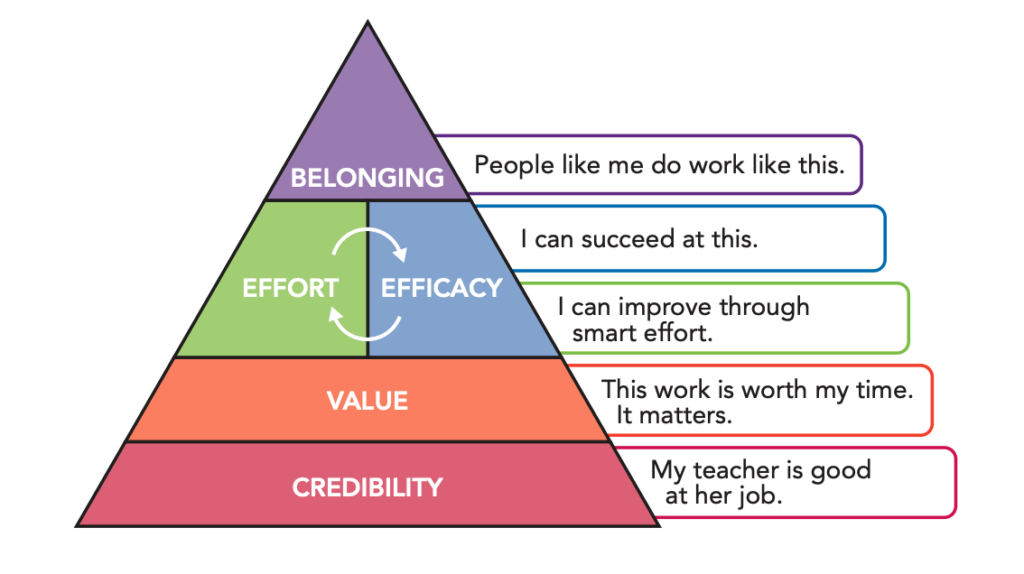When a student slouches back, crosses their arms, and in the surliest tone possible says, “When am I ever going to use this?” we're being given an indicator of a couple things.
- This student's heart has been influenced at least a bit by the dominant utilitarian mentality that Westerners tend to bring to education: “If I can't see how what I'm learning is useful, then what I'm learning is a waste of time.”
- This student is genuinely struggling to WANT to do the work at hand. Something about it is repulsive to them — it is exerting a repulsive effect on their will.
Situations like this are just what the Five Key Beliefs are for.

So first of all, we need to figure out if this is a Value issue (because that's what the student is presenting it as) or if it might be influenced by one of the other Five Key Beliefs.
- Is this student repulsed by this assignment because it's coming from a teacher they don't find Credible? If so, I'll want to focus not just on meeting their expressed concern but also on the underlying problem of my lack of Credibility (Strategies 1, 2, and 3 in The Will to Learn).
- Are they repulsed by this assignment because they're not familiar or comfortable with the kind of Effort it will take to succeed? If so, I'll want to redouble my efforts at Woodenization and Unpacking Outcomes, Good or Bad (Strategies 7 and 9 in The Will to Learn).
- Are they repulsed by this assignment because they sense they'll fail at it? This is an Efficacy issue, and here again I can work on Unpacking Outcomes, Good or Bad and Defining Success Wisely, Early, and Often (Strategies 9 and 8 in The Will to Learn).
- Are they repulsed by this assignment because it doesn't align with how they think of themselves, their identity? This is a Belonging issue, and these are typically solved through Normalizing Struggle (Strategy 10 in The Will to Learn) or attending to the rest of the Five Key Beliefs.
If I can't rule these questions out, then I do want to attend to those problems. As much as I wish student beliefs about my class were like little on/off switches, they act way more like different kinds of plants in a vibrant, interconnected garden ecosystem. They all connect.
But even if I can rule these questions out, there is still a high likelihood that the student has a problem in the Value belief area. These take time to improve — after all, as teachers we are in the counterculture business, and cultivating a counterculture isn't done in a day — but can slowly but steadily be helped through Mini-Sermons, Feasts of Knowledge, and Valued Within methods (Strategies 4, 5, 6 in The Will to Learn).
And if all of this just sounded like a sales pitch for my book…well, in a way it is. Believe it or not, I didn't write the book for fame (I walk through airports undisguised) or riches ($3.50/book in royalties doesn't add up very fast). I wrote it because I wanted to address the common difficulties I encounter as a teacher, such as the difficulty I opened this article with.
Hopefully there's something in here that helps.
Teaching right beside you,
DSJR
Leave a Reply